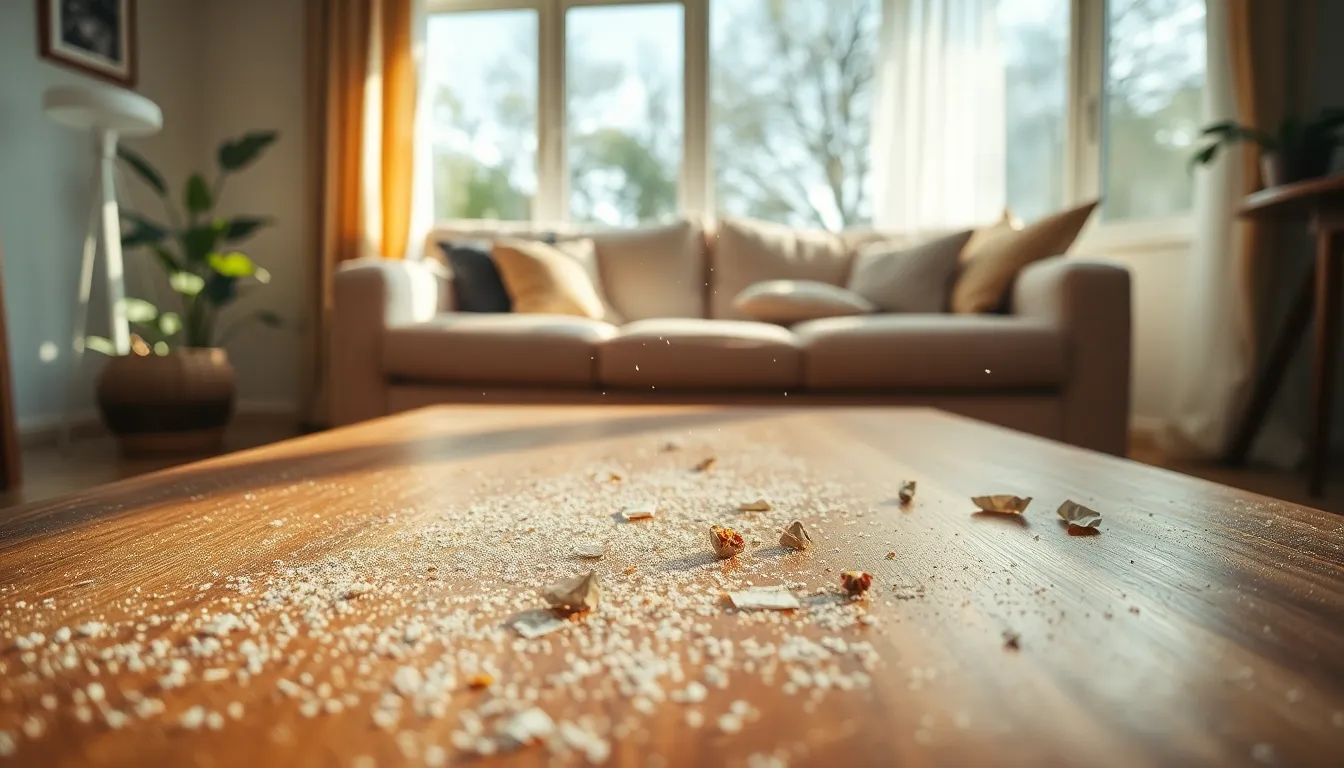In the realm of homeownership, dust and debris often go unnoticed until they become a health concern or detract from a property’s appeal. The presence of these contaminants is not just an aesthetic issue: it can lead to serious health implications and impact overall home maintenance. Understanding where dust and debris come from, and how they can be managed, is essential for homeowners looking to enhance their living environment. This article delves into the nature of dust and debris in realty, their common sources, potential health risks, and effective cleaning and maintenance strategies.
Table of Contents
ToggleThe Nature of Dust And Debris in Realty

Dust and debris consist of minuscule particles that accumulate in environments, affecting cleanliness and air quality. Dust is often comprised of skin cells, hair, pollen, dirt, and other small particles that become airborne. Debris, on the other hand, typically refers to larger waste material, such as fragments of construction, food scraps, or leaves.
Understanding the composition of dust and debris is crucial for homeowners, as these particles can harbor various allergens and pollutants. Also, they can significantly affect indoor air quality, making it necessary for residents to remain vigilant about their presence.
Common Sources of Dust And Debris in Homes
Dust and debris infiltrate homes from several common sources, which can vary based on location and lifestyle.
- Outdoor Influences: Wind can carry dust and pollen from outside, depositing these particles inside homes through open windows and doors.
- Pets: Animal fur and dander frequently contribute to indoor dust, and their movement within the home can stir up these particles.
- Furniture and Fabrics: Upholstered pieces can hold onto dust, which is then released when individuals sit or move about.
- Renovation and Repair Work: Home improvement projects generate significant debris, which can linger long after the work is done.
Homeowners should be aware of these sources to tackle dust and debris effectively.
Health Implications of Dust And Debris Exposure
Exposure to dust and debris can lead to a range of health complications. Individuals with allergies or asthma are particularly susceptible, as inhaling these particles can trigger episodes.
They can cause symptoms such as sneezing, coughing, and respiratory discomfort. According to the American Lung Association, prolonged exposure to poor air quality can lead to chronic bronchitis and other serious respiratory conditions. Also, the buildup of dust can provide a breeding ground for dust mites, further exacerbating allergy symptoms.
So, maintaining a clean environment is not just about aesthetics: it’s crucial for ensuring the health and well-being of all household members.
Cleaning and Maintenance Strategies
Implementing effective cleaning and maintenance strategies is essential for managing dust and debris. Here are some practical tips:
- Regular Dusting: Use microfiber cloths to wipe surfaces, as they can trap dust more effectively than traditional materials.
- HEPA Filters: Investing in a vacuum with a HEPA filter can capture smaller particles that regular vacuums might miss.
- Air Purifiers: These devices can help improve indoor air quality by continuously filtering the air, which is especially beneficial for allergy sufferers.
- Routine Cleaning Schedules: Establishing daily, weekly, and monthly cleaning tasks can help address dust buildup before it becomes an issue, promoting a healthier living environment.
Preventative Measures for Homeowners
Preventing dust and debris accumulation requires proactive measures by homeowners. Here are several tips to consider:
- Seal Entry Points: Ensure that windows and doors fit tightly to prevent outdoor dust from entering. Weather stripping can be an effective solution.
- Maintain Landscaping: Regular lawn care and the removal of debris can minimize dust being carried into the home.
- Keep Floors Bare: Using tiles instead of carpets can reduce dust accumulation, as hard surfaces are easier to clean.
- Control Humidity: Keeping indoor humidity between 30 to 50 percent can prevent dust mites and mold growth.
By adopting these preventative measures, homeowners can significantly reduce the amount of dust and debris in their living spaces.
Conclusion
Dust and debris are unavoidable realities in homeownership, but understanding their nature, sources, and health implications can empower homeowners. By implementing effective cleaning and preventive measures, it’s possible to maintain a cleaner, safer environment. As emphasized throughout this article, a proactive approach to managing dust and debris has far-reaching benefits, not only for aesthetic appeal but also for overall health.


